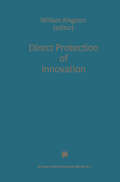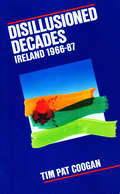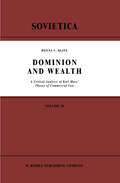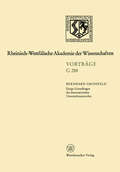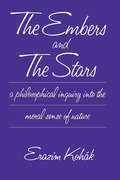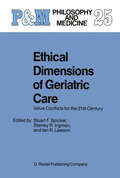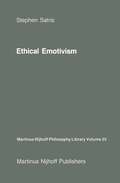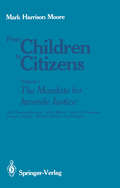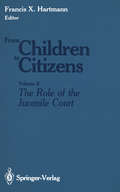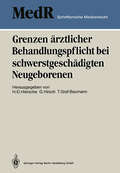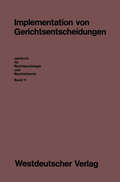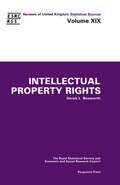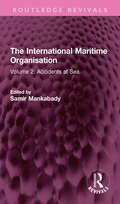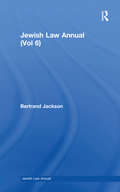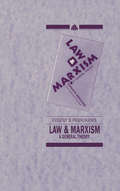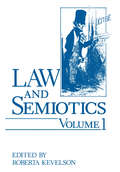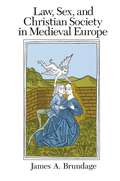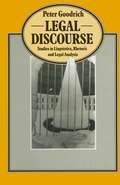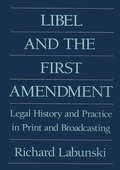- Table View
- List View
Direct Protection of Innovation
by William Kingston1 When in the late seventies the Commission started its preparatory work on a plan of action(l) for the creation of a real Community Innovation market, obviously the question came up, how patents or industrial property could specifically help in stimulating technological and industrial innovation and technology transfer in the Community. From an earlier contractor's study(2) about possible items of action in patent law for the improvement of the impact of patents and patenting upon innovation, it was clear that, in principle, there was room for improvement but shortage of information as to how and to what extent efficient improvements should and could be made. 2 In the early 1980s then, the need for clarifying the potential for improve ment in patent law and patent practice became more pressing, so that the Commission convened an informal meeting of experts on 3/4 November 1982 in Luxembourg, in order to discuss the issues relevant to the relation ship between patent protection and innovation and to identify suitable subject matter for action or study. 38 experts from nine Member States, coming from different areas of activity in industrial property or in innova tion attended the meeting, which was chaired by two of them.
Disillusioned Decades – Ireland 1966–87: From Seán Lemass to Mass Unemployment
by Tim Pat CooganFrom Seán Lemass to mass unemployment: Ireland changed between 1966 and 1987 and, Tim Pat Coogan argues in Disillusioned Decades, not for the betterThe year 1966 was one in which to take stock: fifty years since the Rising, what had the Republic achieved? In Disillusioned Decades, Ireland’s most celebrated and controversial historian Tim Pat Coogan looks at a country in bloom – Seán Lemass was at the end of a successful term as Taoiseach, the economy appeared stable and the newly founded Raidío Telifís Éireann was providing homes around Ireland with art and culture through their television screens.Over the next 21 years, every aspect of Irish life was changed dramatically and profoundly. By 1987, Ireland was a country characterised by high levels of urbanisation, chronic unemployment, mass emigration and a heroin problem comparable in percentage terms to New York. What happened in those pivotal 20 years? Tim Pat Coogan, famous for his perceptiveness and sharp observations, was editor of national newspaper The Irish Press for most of this period, reporting on the people and events that Disillusioned Decades analyses. Using his in-depth knowledge of the political, cultural and social changes of the 1960s, 70s and 80s rounded out with his personal reminiscences, in Disillusioned Decades Coogan steps back to view the events in a wider context.Throughout Disillusioned Decades, Coogan paints a grim and no-punches-pulled picture of Ireland’s trajectory from 1966 to 1987. Sharply perceptive and enlivened by frequent flashes of personal reminiscence, this book presents a wealth of information and opinion in Coogan’s distinctive and authoritative style.
Dominion and Wealth: A Critical Analysis of Karl Marx’ Theory of Commercial Law (Sovietica #49)
by D.C. KlineDonna Kline's contribution to the Sovietica series falls outside the strict confines of the study of Soviet Marxism-Leninism. It centers its attention on the seemingly minor question of Marx' knowledge of and attitude toward the legal theory and practice in vogue at the time he was writing studies that directly addressed issues of law and economics, and that indirectly helped to fashion the legal and economic behavior of Soviet-style regimes. That this question is not as minor or as irrelevant to Marxism-Leninism as it might seem at fIrst glance flows from Marx' obvious intent to do a thorough critique of all the vectors of 'bourgeois-capitalist' civilization and culture, clearly expressed in the many key texts, where 'legal relations' form at least part of the central focus. Marx' thought was forming when the 'bourgeois' law that had become self-conscious at the end of the 18th century was, following the French Revolution, trying to 'take possession' of the social-political consciousness of European-American culture, and fInding itself coming up against the 'vagaries' of economic quasi-anarchy. There is a sense in which the 'bourgeois-capitalist' efforts at developing a legal code for existing economic practice represent a sort of 'ideology in practice' to be applied to the same phenomena that Marx wanted to account for in his peculiarly Hegelian ideological critique.
Einige Grundfragen des Internationalen Unternehmensrechts: 308. Sitsung am 21. Januar 1987 in Düsseldorf (Rheinisch-Westfälische Akademie der Wissenschaften #288)
by Bernhard GroßfeldThe Embers and the Stars
by Erazim Kohák"It is hard to put this profound book into a category. Despite the author's criticisms of Thoreau, it is more like Walden than any other book I have read. . . . The book makes great strides toward bringing the best insights from medieval philosophy and from contemporary environmental ethics together. Anyone interested in both of these areas must read this book."—Daniel A. Dombrowski, The Thomist "Those who share Kohák's concern to understand nature as other than a mere resource or matter in motion will find his temporally oriented interpretation of nature instructive. It is here in particular that Kohák turns moments of experience to account philosophically, turning what we habitually overlook or avoid into an opportunity and basis for self-knowledge. This is an impassioned attempt to see the vital order of nature and the moral order of our humanity as one."—Ethics
The Embers and the Stars
by Erazim Kohák"It is hard to put this profound book into a category. Despite the author's criticisms of Thoreau, it is more like Walden than any other book I have read. . . . The book makes great strides toward bringing the best insights from medieval philosophy and from contemporary environmental ethics together. Anyone interested in both of these areas must read this book."—Daniel A. Dombrowski, The Thomist "Those who share Kohák's concern to understand nature as other than a mere resource or matter in motion will find his temporally oriented interpretation of nature instructive. It is here in particular that Kohák turns moments of experience to account philosophically, turning what we habitually overlook or avoid into an opportunity and basis for self-knowledge. This is an impassioned attempt to see the vital order of nature and the moral order of our humanity as one."—Ethics
The Embers and the Stars
by Erazim Kohák"It is hard to put this profound book into a category. Despite the author's criticisms of Thoreau, it is more like Walden than any other book I have read. . . . The book makes great strides toward bringing the best insights from medieval philosophy and from contemporary environmental ethics together. Anyone interested in both of these areas must read this book."—Daniel A. Dombrowski, The Thomist "Those who share Kohák's concern to understand nature as other than a mere resource or matter in motion will find his temporally oriented interpretation of nature instructive. It is here in particular that Kohák turns moments of experience to account philosophically, turning what we habitually overlook or avoid into an opportunity and basis for self-knowledge. This is an impassioned attempt to see the vital order of nature and the moral order of our humanity as one."—Ethics
The Embers and the Stars
by Erazim Kohák"It is hard to put this profound book into a category. Despite the author's criticisms of Thoreau, it is more like Walden than any other book I have read. . . . The book makes great strides toward bringing the best insights from medieval philosophy and from contemporary environmental ethics together. Anyone interested in both of these areas must read this book."—Daniel A. Dombrowski, The Thomist "Those who share Kohák's concern to understand nature as other than a mere resource or matter in motion will find his temporally oriented interpretation of nature instructive. It is here in particular that Kohák turns moments of experience to account philosophically, turning what we habitually overlook or avoid into an opportunity and basis for self-knowledge. This is an impassioned attempt to see the vital order of nature and the moral order of our humanity as one."—Ethics
Ethical Dimensions of Geriatric Care: Value Conflicts for the 21st Century (Philosophy and Medicine #25)
by Stuart F. Spicker, Stanley R. Ingman and Ian R. LawsonThere is both a timeliness and a transcendent 'rightness' in the fact that scholars, clinicians, and health professionals are beginning to examine the ethics-based components of decision making in health care of the elderly. Ethics - as the discipline concerned with right or wrong conduct and moral duty - pervades hospital rooms, nursing home corridors, physicians' offices, and the halls of Congress as decisions are made that concern the allocation of health-related services to individuals and groups in need. In particular, care of older persons recently has received dispropor tionate attention in discussions of ethics and clinical care. Age alone, of course, should not generate special focus on ill individuals about whom concerns arise based on value conflicts tacitly involved in the delivery of health care. Having said that age is not the principal criterion for attention to ethics-based concerns in health care, it must be acknowl edged that old people have a high prevalence of conditions that provoke interest and put them in harm's way if value conflicts are not identified and seriously addressed. Issues that concern autonomy, the allocation of scarce resources, inter-generational competition and conflict, the withholding of treat ment in treatable disease, and substitute and proxy decision making for the cognitively impaired all have special relevance for older persons.
Ethical Emotivism (Martinus Nijhoff Philosophy Library #25)
by S.A. SatrisThe primary contributions of this work are in three overlapping categories: (i) the history of ideas (and in particular the history of the idea of value) and moral philosophy in both continental and Anglo-American traditions, (ii) the identification and interpretation of ethical emotivism as one of the major twentieth-century ethical theories, and (iii) the evolution of a philosophically viable form of ethical emotivism as an alternative to utilitarianism and Kantianism. In addition, along the way, many particular points are touched upon, e. g. , the relation of Hume to Stevenson and emotivism, the facti value distinction, and human emotional and social nature. The work begins by challenging the received account of the development of twentieth-century moral philosophy, i. e. , the account that occurs in all the recognized historical books (such as G. c. Kerner, The Revolution in Ethical Theory, Oxford, 1966; G. 1. Warnock, Contemporary Moral Philosophy, London, 1967; W. D. Hudson, Modern Moral Philosophy, London, 1967; Mary Warnock, Ethics Since 1900, 3rd ed. , Oxford, 1978; and W. D. Hudson, A Century of Moral Philosophy, New York, 1980). This received account is not only the property of scholars of the history of recent moral philosophy but is also generally assumed by philosophers themselves, and is repeated quite uncritically in the literature at large.
Familie — Recht — Politik: Die Entwicklung des österreichischen Familienrechts im 19. und 20. Jahrhundert (Linzer Universitätsschriften #13)
by Oskar LehnerDie vorliegende Publikation enthilt eine Darstellung der Geschichte des osterreichischen Familienrechts im 19. und 20. Jahrhundert. Ziel der Ar beit ist es. nicht nur einen Uberblick Uber die mitunter recht sturmische Entwicklung dieser Epoche zu bieten. sondern zudem die Ursachen und Beweg griinde der Rechtsanderungen zu analysieren. Die Untersuchung stell t einen Versuch dar. unter Zuhi1 fenahme der sozialwissenschaftlichen und der juristisch-dogmatischen Methode Uber den traditionellen Rahmen rechts historischer Untersuchungen hinauszugehen und (Familien-)Rechtsgeschichte als Produkt gesellschaftlicher Auseinanderseztungen zu sehen und zu er klaren. Bei der DurchfUhrung meiner Forschungen war ich auf die Unterstutzung durch zahlreiche Personen und Institutionen angewiesen. wobei ich mich insbesondere bei den Damen und Herren des Allgemeinen Verwaltungsarchivs Wien und des Bundesministeriums fur Justiz sehr herzlich fur ihre Hilfe bedanken mOchte. SCh Dr. Herbert Ent und MR Dr. Gerhard Hopf ermOglich ten mir nicht nur den Zugang zu den Aktenbestanden. sondern fUhrten mit mir mehrere ausfUhrliche Gesprache Uber die Reformarbeiten des Justiz ministeriums. Zu be sonde rem Dank bin ich Herrn Bundesminister fur Justiz a. D. Dr. Christian Broda und Herrn Abg. i. R. Dr. Walter Hauser verpflich tet. Sie waren die fUhrenden Justizpoli tiker ihrer Parteien in den 70er Jahren und boten mir durch ihre Unterstutzung bei der Erstellung der vor liegenden Arbeit aufschluBreiche Einblicke in den gesellschaftspolitischen Hintergrund der osterreichischen Familienrechtsreform. Frau Prof. Dr. Ursula FloRmann und Herr Prof. Dr. Peter Jabornegg gab en mir bei der DurchfUhrung dar Untersuchung wertvolle Hinweise und Anregun gen. die ich gerne aufgriff.
From Children to Citizens: Volume I: The Mandate for Juvenile Justice
by Mark H. MooreFrom the preface: "History has dealt the juvenile court (and, more broadly, the juvenile justice system) a cruel blow. What began as a promising social experiment has disappointed nearly everyone... Inevitably, disillusionment has weakened the mandate of the juvenile justice system. Conflicts in philosophy, once held at bay by general enthusiasm for the enterprise, have now surfaced with great urgency. What, in fact, is the purpose of the juvenile justice system? Is it to protect the community from youth crime, or to help children grow up? Is it primarily a court dominated by concerns for justice? Or, is it more fundamentally a social service agency concerned with structuring the environments of children? Is the court an independent institution that stands apart from the community and administers justice in a fair and impartial way? Or, is the court an agent of the community in the sense that it establishes norms of conduct and draws both public and private agencies to the tasks of socializing children?"
From Children to Citizens: Volume II: The Role of the Juvenile Court
by Francis X. HartmannFrom the preface: "The issues around which the juvenile justice system is centered frequently evoke anger and impatience. These emotions arise because the issues are so important and movement concerning the same issues seems nonexistent. The persons who are involved with those same issues, however, elicit respect and, often, affection. The Executive Sessions of the Kennedy School of Government combine the two elements - issues and persons - with the stated goal of advancing fruitful and effective public policy. The Executive Session on the Future of the Juvenile Justice System regularly brought to the same table, over a period of almost two years, persons who understand the issues well, who are professionally and personally invested in certain positions on the issues, and who were willing to engage themselves fully in the exchange of ideas, both theoretical and practical, which an Executive Session demands. This book is one of the products of that process. The editor, who chaired the meetings of the Session, takes certain positions regarding the future of the juvenile justice system and what the system should look like ten years from now." 1
Grenzen ärztlicher Behandlungspflicht bei schwerstgeschädigten Neugeborenen: 1. Einbecker Workshop der Deutschen Gesellschaft für Medizinrecht, 27.–29. Juni 1986 (MedR Schriftenreihe Medizinrecht)
by Günter Hiersche Toni Graf-BaumannImplementation von Gerichtsentscheidungen (Jahrbuch für Rechtssoziologie und Rechtstheorie #11)
Die Frage, wie Gerichtsentscheidungen in die bestehende Struktur des Verhaltens vor Gerichten, Verwaltungen und Bürgern "eingepflanzt" werden, ist noch wenig bearbeitet. Nicht zuletzt bereitet es Probleme, den einzelnen Gerichtszweigen Implementationsstruktur, -akteure und -agenturen zuzuordnen. Die Probleme werden in den Beiträgen des Jahrbuchs anhand exemplarischer Forschungen dargestellt und analysiert.
Intellectual Property Rights (Reviews of UK Statistical Sources (RUKSS))
by D. L. BosworthThis volume reviews the publicly available sources of statistical information on intellectual property rights, looking principally at patents, designs, royalties and inventions. The book examines the criteria against which intellectual property is measured, discussing the definitions of 'inventive activity' and 'applied research'; the differences between 'inventiveness' and 'creativity'; the meaning of originality; and the distinctions between scientific originality, industrial inventiveness and business acumen. A valuable source of information for researchers and professionals in the field.
The International Maritime Organisation: Volume 2: Accidents at Sea (Routledge Revivals)
by Samir MankabadyOriginally published in 1987, this book provides a comprehensive manual to the international law governing accidents at sea during the 1980s. It is a complementary study to International Maritime Organisation, now recognised as a standard work on this UN agency. Among the subjects covered in Part 1 are: reporting and investigation of accidents; accidents caused by collision; civil and criminal liability; accidents caused by non-marking wrecks. Part 2 deals with the consequences of accidents and contains a considerable body of law and regulations on oil and chemical pollution, salvage and personal injury
The International Maritime Organisation: Volume 2: Accidents at Sea (Routledge Revivals)
Originally published in 1987, this book provides a comprehensive manual to the international law governing accidents at sea during the 1980s. It is a complementary study to International Maritime Organisation, now recognised as a standard work on this UN agency. Among the subjects covered in Part 1 are: reporting and investigation of accidents; accidents caused by collision; civil and criminal liability; accidents caused by non-marking wrecks. Part 2 deals with the consequences of accidents and contains a considerable body of law and regulations on oil and chemical pollution, salvage and personal injury
Jewish Law Annual (Jewish Law Annual #6)
by Bertrand JacksonFirst Published in 1987. Routledge is an imprint of Taylor & Francis, an informa company.
Jewish Law Annual (Jewish Law Annual #6)
by Bertrand JacksonFirst Published in 1987. Routledge is an imprint of Taylor & Francis, an informa company.
Law and Marxism: A General Theory
by Evgeny PashukanisThis is a classic Marxist study first published in 1924 - one of the principal Soviet contributions to jurisprudence theory. It is an authoritative non-revisionist text offering both a commentary and a critique of prevailing Marxist and non-Marxist legal theory. Pashukanis states that juridical and state forms are linked to a specific type of class society - capitalist society. However, law comes not from the rule of the capitalist class but from the relations of production that created that class. Rights and laws are exchanged like commodities.*BR**BR*The author applies Marx's writings on contract and property law, giving sensitive attention to the interrelation of commodity values and individual rights. He considers the ritual, pomp and mystique of legal systems, and looks at law in relation to power structures, the state, exploitation, and morality.
Law and Semiotics: Volume 1 (Semiotics And The Human Sciences Ser. #Vol. 3)
by Roberta KevelsonHowever, it became apparent shortly after the establishing of the Center that not only were all methods of legal semiotics not Peircean in origin, but were in their respective foundational assumptions not likely to be compatible with Peirce's semiotics without some radical, transforming development of the idea, 'legal semiotics'. It was clear that if one would intend to be faithful to Peircean semiotics then holding a fixed notion of what an idea of Peircean semiotics of law means would be a violation of the spirit of Peirce's thought; this above all emphasizes the growth and development of initiative ideas and also the stricture that all leading principles must be subject to revision. Even the idea of Peircean semiotics, as leading principle, must itself be an open idea, the meaning of which must be transformable through the process of defining it. A metasemiotics view of a semiotics of law must leave open the possibility for revision of the leading principle of the term, "legal semiotics. " Therefore, if legal semiotics is an idea which accumulates and evolves its meaning in the very process of self-examination, then a process of investigating law investigates itself as well in any semiotic process of inquiry. It became apparent that the most appropriate contribution the Center could make to the area of a Peirce an semiotics would be to act as a sponsor, an inclusive rather than exclusive agent for inquiry of all kinds into the general topic of law and semiotics.
Law, Sex, and Christian Society in Medieval Europe
by James A. BrundageThis monumental study of medieval law and sexual conduct explores the origin and develpment of the Christian church's sex law and the systems of belief upon which that law rested. Focusing on the Church's own legal system of canon law, James A. Brundage offers a comprehensive history of legal doctrines–covering the millennium from A.D. 500 to 1500–concerning a wide variety of sexual behavior, including marital sex, adultery, homosexuality, concubinage, prostitution, masturbation, and incest. His survey makes strikingly clear how the system of sexual control in a world we have half-forgotten has shaped the world in which we live today. The regulation of marriage and divorce as we know it today, together with the outlawing of bigamy and polygamy and the imposition of criminal sanctions on such activities as sodomy, fellatio, cunnilingus, and bestiality, are all based in large measure upon ideas and beliefs about sexual morality that became law in Christian Europe in the Middle Ages. "Brundage's book is consistently learned, enormously useful, and frequently entertaining. It is the best we have on the relationships between theological norms, legal principles, and sexual practice."—Peter Iver Kaufman, Church History
Legal Discourse: Studies in Linguistics, Rhetoric and Legal Analysis (Language, Discourse, Society)
by Peter GoodrichLibel and the First Amendment: Legal History and Practice in Print and Broadcasting
by Richard E. LabunskiAs the recent cases involving William Westmoreland and Ariel Sharon re-veal, libel suits filed against media organizations have become an increas-ingly serious problem in recent years. The potential for inhibiting news coverage or even putting a news organization out of business has never been greater. This book explores historical and contemporary issues relating to libel suits against media organizations, emphasizing the consequences of the development of libel law for the First Amendment. It also considers the spe-cial problems that broadcasters have with libel suits and their potentially in-hibiting effect on television news coverage. Labunski traces the development of libel law largely from 1964, when the Supreme Court entered the libel arena for the first time and began a twenty-year effort to develop standards that are fair to both sides. He de-scribes the hostile environment which journalists must enter when they de-fend themselves in court. He also demonstrates the complexity and inconsis-tency that have resulted from the state-by-state creation of libel standards. Labunski offers suggestions, some more easily accomplished than others, that will help us get out of the libel "morass" which twenty years of Su-preme Court activity and lower court litigation have produced. This book will be of particular value to students of the First Amendment, communica-tion scholars, working journalists, and anyone who wants to better under-stand the complex development of libel laws and the effect of libel suits on news coverage.
